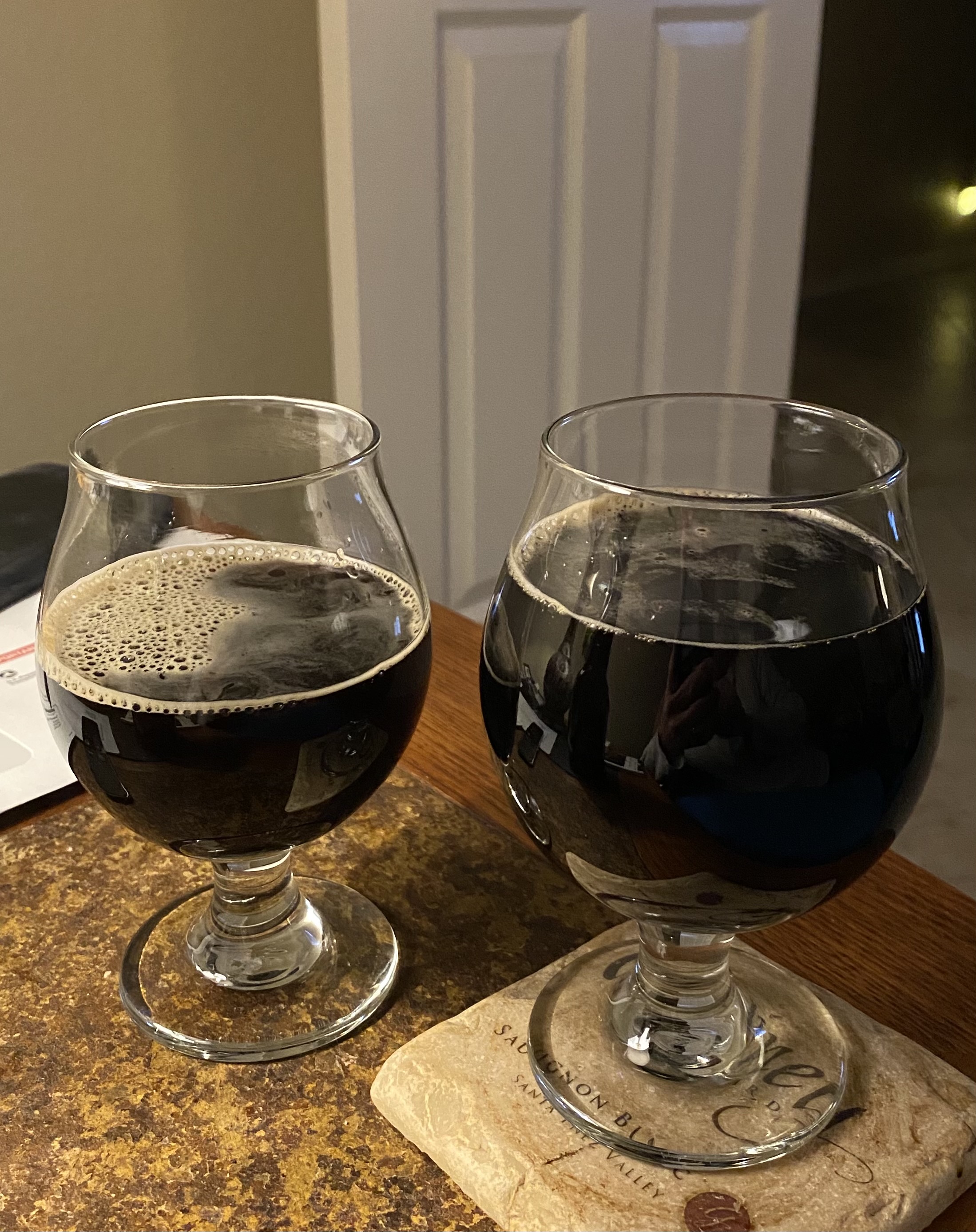Back in July we bottled my wife's first ever homebrew - a one gallon 10% Imperial Coffee Stout. After a 28 day fermentation we siphoned from the fermenter to a bottling bucket and gently stirred the beer. We added one level tsp of table sugar to each of 7 bottles prior to filling them with beer, ( a method I picked up from @TwistedGray ) . We then bottled in swing-top Grolsch style 16oz bottles. Completely filled 6 bottles, the 7th one we were only able to get about 2/3 filled. Fermentation temps were room temperature, which mostly occurred during the summer to fall. Average daytime temps in the house would have been around 72-75° during the day, and 68-70° at night.
Fast forward to mid November when we opened the partially filled bottle. It was perfectly carbed and tasted wonderful. We've opened three more of the filled bottles since then and each one was not carbed at all. Tasted wonderful though.
Some thoughts - the 7th bottle contained more sugar per oz than the others. The 7th bottle contained more trub (maybe that includes more yeast??) than the others. First time using swing-top bottles. Are they ok for longer term storage? I'm assuming they are.
Yeast was 1/2 packet of dry Nottingham, which is probably pushing the boundaries for a 10% beer, but it fermented as expected per Beersmith.
OG: 1.094 (measured)
FG: 1.018 (measured)
Recipe was:
78.9% 2-Row
7.2% Crystal-80
3.6% Chocolate Malt
2.7% Flaked Barley
2.7% Flaked Oats
2.7% Special B
2.2% Roasted Barley
.5oz. Nugget @ 60mins.
1oz Centennial @ 5mins.
2oz Medium Roast Coffee, coarsely ground, hopsack-steeped at ~170° for ~30 mins.
Even though the coffee favor didn't make it through I can definitely recommend this recipe, it smells and tastes absolutely wonderful!!
Any thoughts on if and how I can carb the remaining bottles? A little yeast and a little sugar perhaps?
Fast forward to mid November when we opened the partially filled bottle. It was perfectly carbed and tasted wonderful. We've opened three more of the filled bottles since then and each one was not carbed at all. Tasted wonderful though.
Some thoughts - the 7th bottle contained more sugar per oz than the others. The 7th bottle contained more trub (maybe that includes more yeast??) than the others. First time using swing-top bottles. Are they ok for longer term storage? I'm assuming they are.
Yeast was 1/2 packet of dry Nottingham, which is probably pushing the boundaries for a 10% beer, but it fermented as expected per Beersmith.
OG: 1.094 (measured)
FG: 1.018 (measured)
Recipe was:
78.9% 2-Row
7.2% Crystal-80
3.6% Chocolate Malt
2.7% Flaked Barley
2.7% Flaked Oats
2.7% Special B
2.2% Roasted Barley
.5oz. Nugget @ 60mins.
1oz Centennial @ 5mins.
2oz Medium Roast Coffee, coarsely ground, hopsack-steeped at ~170° for ~30 mins.
Even though the coffee favor didn't make it through I can definitely recommend this recipe, it smells and tastes absolutely wonderful!!
Any thoughts on if and how I can carb the remaining bottles? A little yeast and a little sugar perhaps?
Last edited:



![Craft A Brew - Safale BE-256 Yeast - Fermentis - Belgian Ale Dry Yeast - For Belgian & Strong Ales - Ingredients for Home Brewing - Beer Making Supplies - [3 Pack]](https://m.media-amazon.com/images/I/51bcKEwQmWL._SL500_.jpg)












































